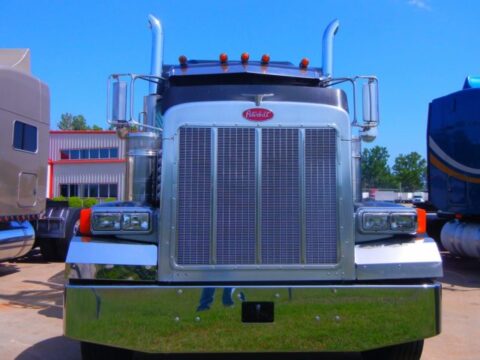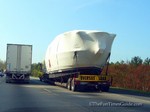Many thanks to Randy, who shared the following photos with us, after he read my post about the oversized load.
Here’s another example of one heckuva oversized load… with pictures!

This happened the day after your post on oversized tires on 4/4/06.
I was running an errand and traveling south on I-75 near Kennesaw, and after I merged into traffic I see this HUGE yacht being transported on a flatbed trailer. (The yacht had meridian-yachts.com printed on the side.)
You can see how big it actually is as it is being passed by other tractor-trailers and cars:
And in this photo, you can see that it just barely made it under an overpass:
[…Thanks for sharing, Randy!]
What I Learned Today…
Jim has spent some time studying the CDL license handbook (in case the race team needed him to help transport race cars to and from the racetracks).
As a result, he has learned a few things about wide loads:
1. The signs which state overhead clearance for all bridges and elevated structures are not always accurate.
Say what?!…
A big rig driver has since confirmed this for us:
If the road was paved after a particular sign was first posted, then you should subtract anywhere from 1-3 inches (to accomodate the new layer of asphalt) and determine your “true” clearance.
2. The “clearance point” is measured from the lowest point of the bridge or overhang to the surface of the road.
HOWEVER, you can tell just by looking that each individual lane under a bridge or overhang has a slightly different clearance point. That’s mostly due to the fact that roads simply are not built at perfect 90-degree angles from the overhead point. Not to mention the fact that there are variances in the degree of incline in each individual lane.
Plus, if the bridge or overhang happens to be on even the slightest bit of an incline overhead (say, at a minor twist in the road for example), then the clearance point for each lane underneath it would be altered slightly.
My goodness… I guess when you’re transporting wide loads (or rather tall loads!), the fact of the matter is this:
You’d better know PRECISELY what your height clearance is, and… know your route well!






